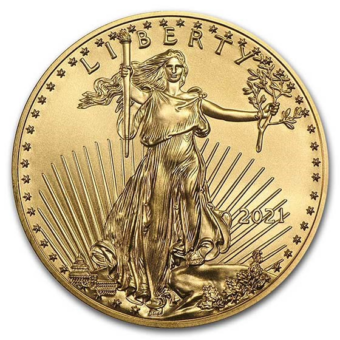A Daily Journey Through the Week's Market
Monday - 2.26.24: Gold and silver prices are experiencing a decline in early U.S. trading Monday, influenced by chart-based selling in a relatively calm market awaiting a new fundamental catalyst. April gold dropped $7.00 to $2,042.40, while March silver decreased by $0.432 to $22.54. The rally in the stock market, reflecting an increased risk appetite, has impacted the demand for these traditionally safe-haven assets.
Tuesday - 2.27.24: Gold and silver prices have seen a minor decrease at the beginning of the week, with traders on the lookout for new fundamental factors to influence market trends. Currently, gold has fallen by $8.51 to $2026.89, and silver by 40 cents to $22.55. Tavi Costa from Crescat Capital recently noted via Twitter/X a notable decrease in the implied volatility of gold call options, reaching one of its lowest historical points. This condition echoes a previous time that led to a significant 75% surge in gold prices over the following years.
Wednesday - 2.28.24: In early U.S. trading on Wednesday, gold and silver prices have dipped due to negative external market forces, including a stronger U.S. dollar and declining crude oil prices. The key U.S. economic data this week will be Thursday's personal income and outlays report for January, including the personal consumption expenditures (PCE) inflation indexes, with the PCE price index anticipated to rise by 2.6% year-on-year and the core PCE price index by 2.9%, slightly above December's figures.
Thursday - 2.29.24: Following a slightly cooler-than-expected U.S. inflation report, gold and silver prices surged in midday U.S. trading Thursday, with gold reaching a three-week peak. This recent inflation data, indicating potential for the Federal Reserve to cut interest rates sooner, boosts demand for precious metals and slightly depresses the U.S. dollar. April gold climbed $11.30 to $2,054.00, and March silver increased $0.17 to $22.585. The personal income and spending report for January revealed stronger-than-anticipated income growth at 1.0% and as-expected spending growth at 0.2%, with the PCE price index's year-on-year rise at 2.4%, below the forecasted 2.6%.
Friday- 3.01.24: Gold prices soared to a four-week high in early U.S. trading Friday, buoyed by subdued U.S. inflation data and a dip in the U.S. dollar index, with rising crude oil prices also lending support. The improved technical outlook for gold has led to increased buying interest. Silver prices remained stable, with April gold increasing by $7.00 to $2,061.70. In the U.S., stock index futures indicate a mixed start, with key data releases including the U.S. manufacturing PMI and the University of Michigan consumer sentiment survey anticipated. These developments highlight the impact of U.S. economic indicators on the precious metals market, underscoring the interplay between economic data and market trends.
January's PCE Price Index Report Signals Surging Inflation, Stirring Economic Concerns
The January PCE price index report, a critical inflation measure preferred by the Federal Reserve, indicated significantly higher inflation than anticipated, prompting discussions about potential threats to economic growth. The Commerce Department's data showed inflation rates surpassing economists' forecasts, with a notable month-over-month increase, challenging the Fed's target inflation rate of 2%. Experts like Mark Zendi of Moody’s Analytics cautioned against expecting a linear trend in inflation, noting the unpredictability highlighted by January's data.
Despite this surge, there's a consensus among economists and Fed officials like Susan Collins that a single month's data should not overshadow the overall trend of decelerating inflation as the Fed nears its 2% inflation goal. The report also underscored the distinction between the PCE and CPI inflation measures, highlighting the PCE's broader approach to capturing consumer behavior changes.
The financial markets reacted with increased yields on Treasury notes and gains across major stock indices, while gold and silver prices saw significant movements, reflecting the report's impact on investor sentiment and expectations for future Fed rate adjustments.
Russia's Digital Ruble: A Catalyst for Global De-Dollarization
In the context of BRICS' efforts towards de-dollarization, Russia's development of the digital Ruble emerges as a pivotal strategy to reduce global reliance on the US Dollar. As nations increasingly explore state-issued digital assets, Russia's focus on digital currencies for cross-border settlements is seen as a direct challenge to the Dollar's dominance. The digital Ruble's potential to facilitate financial autonomy, especially within the BRICS alliance, underscores a broader shift towards digital currencies that could redefine global financial interactions. With countries like India, China, and South Africa also advancing their digital currency initiatives, the collective move towards Central Bank Digital Currencies (CBDCs) reflects a significant trend that could accelerate the decline of the Dollar's role in international trade. This transition highlights the transformative power of blockchain technology in enabling a diversified, multi-currency framework for global commerce, putting the spotlight on Russia's efforts as a critical factor in the shift away from Dollar dependency.
Jamie Dimon Expresses Caution, Anticipates Potential Economic Challenges Ahead
Jamie Dimon, CEO of JPMorgan Chase, shared a cautious outlook on the U.S. economy, suggesting that the optimism for a soft landing might be overly optimistic, despite not foreseeing a crisis on the scale of 2008. Speaking at the JPMorgan High Yield and Leveraged Finance Conference, Dimon highlighted concerns over sustained high interest rates and the potential for a recession, which could particularly impact commercial real estate and regional banks. However, he believes the overall macroeconomic impact of these challenges will be limited. Dimon's comments reflect a recalibration of market expectations regarding Federal Reserve monetary policy, with interest rate cuts now anticipated to start later than previously expected. While acknowledging various economic pressures—including quantitative tightening, fiscal deficits, and geopolitical tensions—Dimon emphasized a broader, cautious approach to current economic indicators. He considers the struggles faced by certain banks and the private credit sector as isolated incidents rather than signs of systemic risk, suggesting a path through potential downturns that avoids the severe outcomes seen in past financial crises.
Copper Crowned as Top Investment for 2024, Gold Also Gains Favor Among Investors at BMO Conference
At the 33rd annual Global Metals, Mining & Critical Minerals Conference hosted by BMO Capital Markets, copper emerged as the most favored asset for 2024 among investors, with gold also seeing increased interest. Despite a slight decline in enthusiasm compared to previous years, 62% of survey respondents at the conference chose copper as their asset of choice for the next five years, highlighting the metal's potential amidst global supply-side issues and anticipated benefits from infrastructure upgrades. Gold's appeal as a long-term investment has notably increased, with 22% of participants favoring it, up from just 10% last year. Conversely, interest in critical and battery metals like lithium saw a decline, marking a shift from the previous year's strong focus. Despite this cooling interest, the sector remains on the radar for its potential price floor in underperforming materials. Regarding gold prices, attendees had mixed expectations, with a significant portion predicting prices to range between $1,950 and $2,150 an ounce, while others were more bullish. BMO analysts highlighted a discrepancy in the understanding of gold market drivers, pointing out the overlooked importance of Chinese consumer demand and emerging market central bank purchases as key factors for gold's future trajectory.
BRICS Moves to Challenge US Dollar Dominance with New Digital Payment Platform
The BRICS bloc, consisting of Brazil, Russia, India, China, and South Africa, is taking significant steps towards reducing its reliance on the US dollar by developing a new digital payment platform, dubbed the BRICS Bridge. This initiative, spearheaded by Russia's Finance Ministry and the Central Bank of Russia, aims to establish a multisided digital platform for settlements without the need for the US dollar, marking a pivotal move towards de-dollarization within the bloc. The proposed platform is part of a broader set of financial initiatives and recommendation designed to overhaul the current international monetary and global financial system. Expected to be introduced at the next BRICS summit in October 2024, this platform represents a strategic effort to enhance financial cooperation among member states, increase mutual trade turnover, and potentially shift global economic power dynamics by offering an alternative to the dominant US dollar.
Morgan Stanley's Chief Economist Predicts Inevitable Hard Landing for U.S. Economy
Ellen Zentner, Morgan Stanley's chief U.S. economist, in a recent interview with CNBC, forecasted a challenging period ahead for the U.S. economy, emphasizing the inevitable "hard landing" due to the cumulative impact of monetary policy tightening. This perspective aligns with concerns over the prolonged effects of high interest rates, which have begun to strain the economy, and the Federal Reserve's hesitation to lower these rates amidst persisting inflation. The situation draws parallels with the 1970s stagflation, suggesting a departure from the preferable "Goldilocks" economic state of balanced growth. This prediction comes amid signs of distress in the commercial real estate sector, exemplified by a Canadian pension fund's drastic sale of its stake in a Manhattan office tower for just one dollar, signaling a broader market downturn. Additionally, the tech and banking sectors are undergoing significant layoffs, with companies like Electronic Arts and Citigroup announcing job cuts, reflecting a tightening economic environment. This convergence of factors points toward a grim economic outlook, with some analysts like David Morgan warning of a global depression unprecedented in scale.
High Borrowing Costs Dampen American Consumer Sentiment Despite Economic Strengths
Despite a robust job market and diminishing inflation, American public sentiment towards the economy has remained notably negative, potentially due to the end of inexpensive borrowing. Interest rate hikes, the primary tool against inflation, have led to increased costs for credit cards, car loans, and more, which traditional inflation metrics fail to capture. This has led researchers, including IMF economist Marijn Bolhuis and Harvard's team, to suggest that consumer dissatisfaction is closely tied to these rising borrowing costs. Their study indicates that as the Federal Reserve contemplates reducing interest rates, consumer sentiment could see improvement. However, continued high interest rates may extend consumer dissatisfaction. This analysis challenges previous explanations for the 2023 sentiment anomaly, pointing out that the actual discontent may be more economically grounded than previously thought, with a significant role played by the increased cost of borrowing rather than just "vibes" or political partisanship.
Next Week’s Key Events
Monday, March 4
● No reports scheduled.
Tuesday, March 5
● 10:00 am: ISM Services Index for February.
Wednesday, March 6
● 8:15 am: ADP Employment Report for February.
● 10:00 am: JOLTS Report for January.
● 2:00 pm: Federal Reserve Beige Book.
Thursday, March 7
● 8:30 am: Initial Jobless Claims for the week ending March 2.
Friday, March 8
● 8:30 am: Employment Situation Summary (Jobs Report) for February.
● 10:00 am: Consumer Sentiment (final) for February.
IMPACT ON GOLD AND SILVER MARKETS:
ISM Services Index:
A stronger than expected ISM Services Index could indicate a healthy economy, potentially leading to a stronger dollar and lower gold and silver prices as investors move towards riskier assets. Conversely, a weak report could increase demand for gold and silver as safe havens.
ADP Employment Report:
Positive employment figures could bolster investor confidence in the economy, potentially reducing demand for gold and silver. On the other hand, disappointing employment growth could increase their attractiveness as safe investments.
JOLTS Report:
A high number of job openings could signal strength in the job market, possibly putting downward pressure on gold and silver prices as confidence in the economy grows. A decline in job openings might have the opposite effect.
Federal Reserve Beige Book:
Insights into economic conditions from the Fed's Beige Book could sway investor sentiment. Positive outlooks may dampen gold and silver demand, while concerns about economic growth could enhance their appeal as safe havens.
Initial Jobless Claims:
Lower than expected jobless claims, indicating fewer layoffs, could decrease demand for gold and silver by reflecting economic strength. Higher claims could signal economic uncertainty, potentially increasing demand for these metals.
Employment Situation Summary:
A strong jobs report might lead to a stronger dollar and weaker gold and silver prices, as it suggests economic robustness. A weak jobs report could have the opposite effect, boosting demand for precious metals.
Consumer Sentiment:
High consumer confidence could reduce the appeal of gold and silver as investors turn to equities and other risk assets. Lower consumer sentiment might increase demand for these metals as protective investments.






















